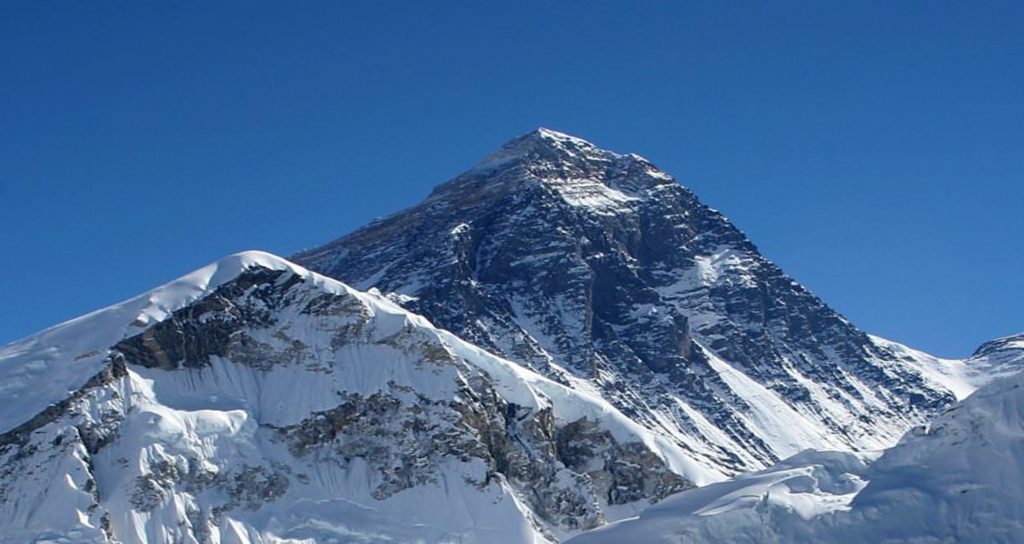
As we celebrate World Mountain Day, it’s an opportune moment to reflect on the awe-inspiring beauty and ecological significance of these majestic landforms. Mountains are not only towering symbols of nature’s grandeur but also vital components of our planet’s biodiversity and climate regulation. From the towering Himalayas to the diverse Andes, these geological wonders play a crucial role in providing freshwater, supporting diverse ecosystems, and offering a sanctuary for countless species. This day prompts us to appreciate and raise awareness about the challenges these landscapes face, including climate change, deforestation, and the delicate balance that sustains life at high altitudes.
Let’s explore the profound impact of mountains on our world and our collective responsibility to preserve these natural wonders for future generations.

What are these massive landforms?
A mountain is a landform that rises prominently above its surroundings, typically having a peak or summit and is specifically identified by steep slopes and significant elevation differences. Mountains become a type of landform as they are part of the terrain and are on the surface of the earth. They vary significantly in their appearance and elevation. For example, some have pointy rocks covered with snow year-round, and some have green rounded tops. The significant difference between a mountain and a hill is that mountains are steeper, taller, and more prominent than hills. Although mountains rise individually, they form a series of mountains called a mountain range.
How do mountains form?

A mountain is distinguishably present as a result of the noticeable elevation difference between it and the surrounding terrain. The two major driving forces for the formation of mountains are:
- Plate tectonics
- Volcanoes
According to the theory of plate tectonics, the Earth’s crust is divided into massive ‘plates’ that glide atop the molten upper layer of the Earth’s mantle. These plates move in different directions, and when they collide with each other, as both plates have a similar thickness and weight, neither one will sink under the other. The forces push the crust up, resulting in mountain formation. Through ongoing plate collisions, mountains progressively elevate, growing taller with time. The Himalayan mountain range in Asia is still growing through this process. The gradual process of uplifting the Earth’s crust through prolonged plate collisions unfolds over many years, contrasting with the slower pace of erosion. Despite its gradual nature, this geological phenomenon results in the formation of striking mountain ranges.
For example,
- Himalayas: formed due to the collision of the Indian and Eurasian plates, where the Indian plate gradually moved northward and collided with the Eurasian plate.
- Rocky Mountains: formed due to the collision of the North American and Pacific plates.
- Andes: formed due to the subduction of the Nazca Plate beneath the South American Plate. The oceanic Nazca Plate sinks beneath the continental South American Plate, causing volcanic activity and the formation of the Andes.
- Apls: Originated from the convergence of the African and Eurasian plates. The compression and collision between these plates led to the uplift of the Alps in southern Europe.
Certain mountains originate from erupting volcanoes, openings in the Earth’s crust that expel gas, ash, solid rock, and lava. Volcanoes, such as Mauna Loa and Mauna Kea in Hawaii, can be deemed mountains due to their prolonged release of molten material, resulting in remarkable elevations.
Types of Mountains
Volcanic, fold, block, and residual mountains are the main types of mountains present in the world.
- Volcanic mountains are mountains that form as a result of volcanic activity and the accumulation of volcanic materials. They are typically associated with the Earth’s tectonic plate boundaries, where magma from the Earth’s mantle can reach the surface, either through volcanic eruptions or through intrusions that solidify beneath the Earth’s crust.
- Fold mountains are a type of mountain range that forms primarily through the folding of rock layers caused by tectonic plate movements.
- Block mountains, also known as fault-block mountains, are a type of mountain range that forms through the movement of tectonic plates and the resulting displacement of rock blocks along faults.
- Residual mountains, also known as erosional mountains, are a type of mountain that forms through the process of erosion rather than tectonic forces. These mountains are characterized by their rugged terrain and often have distinctive peaks and ridges.
Ecological Importance and the Challenges Faced by Mountains
Mountains play a crucial role in maintaining the ecological balance of the world, serving as unique and diverse ecosystems that contribute significantly to global biodiversity. These elevated landforms provide habitat for a wide variety of plant and animal species, many of which are specially adapted to challenging mountain environments. The rich biodiversity in mountains contributes to overall global biodiversity, ensuring the survival of unique and often endemic species. Also, mountains serve as water towers for the planet, acting as the source of numerous major rivers that supply water to millions of people downstream. The intricate network of mountain ecosystems plays a vital role in regulating water flow, preventing erosion, and maintaining soil fertility. Additionally, mountains are key players in climate regulation, influencing weather patterns and serving as carbon sinks.
Despite their ecological importance, mountains face various environmental threats, such as climate change, deforestation, and unsustainable land use practices, underscoring the need for concerted global efforts to preserve and sustain these invaluable ecosystems.

Despite their ecological importance, mountains face various environmental threats, such as climate change, deforestation, and unsustainable land use practices, underscoring the need for concerted global efforts to preserve and sustain these invaluable ecosystems.
Conservation of mountains
The conservation of mountains is imperative to safeguard the ecological, hydrological, and climatic services they provide to the world. Sustainable land management practices, including reforestation and the prevention of deforestation, are essential to mitigate habitat loss and degradation. Additionally, the promotion of responsible tourism is crucial to minimizing the impact of human activities on fragile mountain environments. Collaborative international initiatives are essential to address cross-border conservation challenges and ensure the sustainable management of mountain ecosystems for the benefit of both local communities and the broader global environment. By prioritizing the conservation of mountains, we can secure essential ecosystem services, protect biodiversity, and promote the resilience of these remarkable landscapes in the face of environmental threats.
To conserve and promote sustainable management of mountains, International Mountain Day is celebrated on the 11th of December. The theme of International Mountain Day varies each year, focusing on different aspects of mountain conservation and sustainable development. The goal is to foster a better understanding of the importance of mountains and encourage responsible practices to ensure the well-being of these ecosystems and the communities that depend on them. The theme dedicated to 2023 is “Restoring Mountain Ecosystems.”.
Ultimately, the celebration of International Mountain Day serves as a reminder of the vital role mountains play in global sustainability and the need for collective action to protect and preserve these precious landscapes.

Written by:
Hansali Perera
2nd Year Undergraduate,
Biological Science Stream,
Faculty of Science,
University of Colombo.
References:
- National Geographic. (2018, October 15). Mountains Information and Facts. Science. https://www.nationalgeographic.com/science/article/mountains#:~:text=They%20usually%20have%20steep%2C%20sloping
- Mountain: Definition, Formation, Characteristics & Examples – Video & Lesson Transcript. (n.d.). Study.com. https://study.com/academy/lesson/mountain-definition-formation-characteristics-examples.html
- Molnar, P. H. (2019). mountain | Definition, Characteristics, & Types. In Encyclopædia Britannica. https://www.britannica.com/science/mountain-landform
Image Courtesy:
- Title Image: http://bit.ly/488w3V1
- 1st Content Image: https://bit.ly/3uLgSCE
- 2nd Content Image: https://bit.ly/3RCpwN1
- 3rd Content Image: https://bit.ly/48eUbp3
- 4th Content Image: https://bit.ly/4ae28wo



0 Comments